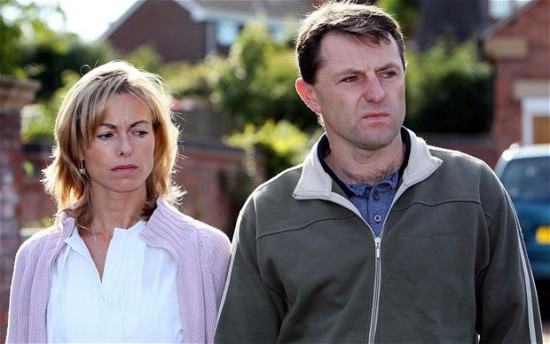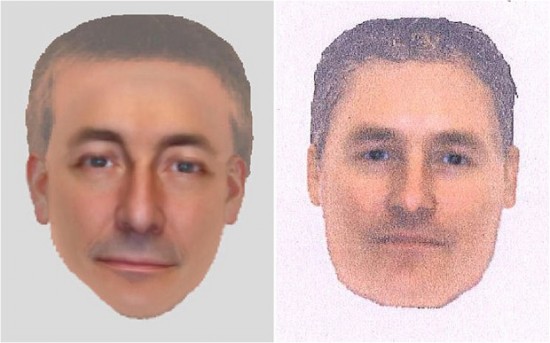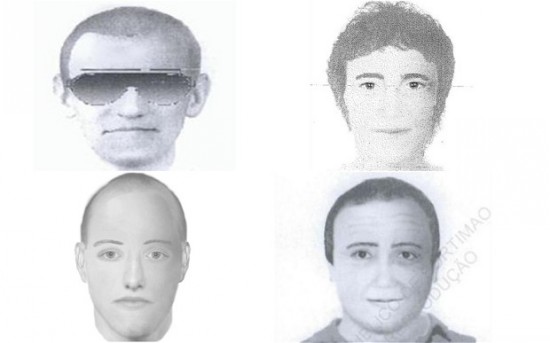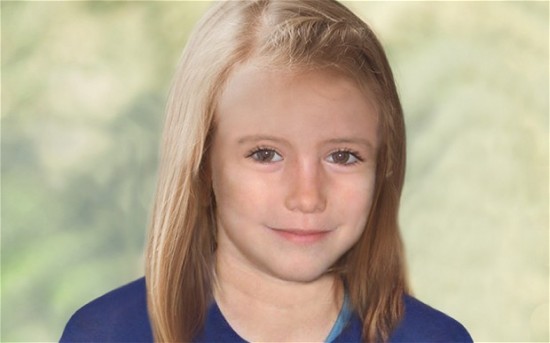|
|
| |
|
After Scotland Yard scales down its
investigation, Gordon Rayner looks at
the latest news on the truth about what
happened to Madeleine McCann |
| |
 |
|
Madeleine McCann went
missing in 2007 Photo:
McCann family |
|
| |
|
In the nine years since Madeleine McCann
went missing from a holiday apartment in
Portugal, myriad theories about what
happened to her have taken root, but
only one fact remains uncontested: that
she was reported missing at 10.14pm on
the evening of Thursday, May 3, 2007.
It was at that point, when police were
called, that the clock started ticking
on the biggest missing persons
investigation for decades, a search
which remains very much active to this
day.
Facts, the hard currency of any police
investigation, have proved almost
uniquely elusive; every sighting, every
timing and every witness statement has
been disputed in the years that have
elapsed since.
Madeleine’s parents Kate and Gerry
McCann quickly came under suspicion by
Portuguese police, a development that
the couple are certain meant vital clues
were missed in the first hours and days
after Madeleine’s disappearance. |
| |
|
Every possible theory has been explored
since then: that Madeleine was abducted
by a paedophile; that she was killed
during a bungled burglary and her body
dumped; that she was abducted by
traffickers and sold to a childless
couple; that she wandered out of the
apartment and died in a tragic accident,
and many more besides.
To date, however, not one shred of proof
of what happened to Madeleine has been
unearthed. The question of what happened
to Madeleine would become not only a
personal tragedy for the McCann family,
but a national obsession in the UK and
in Portugal.
Madeleine, of Rothley, Leicestershire,
was on the penultimate day of her family
holiday on the day she vanished. She had
spent part of the day playing by the
swimming pool in the Ocean Club resort,
where the last known picture of her was
taken at 2.29pm.
Latest in hunt for Madeleine McCann:
former detective hopeful of new
discovery |
| |
|
Reports of when she was last seen alive
by independent witnesses vary, but she
was still alive at around 6pm, when she
and her parents went into their
apartment at 5A Rua Dr Agostinho da
Silva, where Madeleine and her
two-year-old twin brother and sister
were readied for bed.
The McCanns told police they put the
children to bed at around 7pm, and that
all three were asleep by 8.30pm, when
they went for dinner at a tapas bar 50
yards across the pool from their
apartment. There they met seven friends
with whom they were on holiday. |
| |
 |
|
Kate and Gerry McCann |
| |
|
|
The McCanns say checks were made on
their children every half-hour,
sometimes by other members of the party,
comprising Dr Russell O'Brien and Jane
Tanner, from Exeter, Dr Matthew and
Rachael Oldfield, from London, and David
and Fiona Payne, from Leicester,
together with Mrs Payne's mother Dianne
Webster. Mrs Webster, however,
reportedly told police that each couple
was responsible for checking their own
children.
Gerry McCann went to the apartment at
9.05pm, when all the children were
sleeping soundly and Madeleine was still
in her bed, he says.
The police in Portugal, however, have
never accepted the McCanns’ evidence as
undisputed. They initially regarded the
McCanns as suspects, and believed the
McCanns could have killed Madeleine any
time after the last independent sighting
of her at 6pm.
A timeline of that evening shows that Dr
Matthew Oldfield went into apartment 5A
at 9.30pm, and noticed that Madeleine’s
room seemed lighter than the others, as
if the shutters had been partially
opened. He could not be certain whether
Madeleine was there.
Kate McCann was next to check on the
children, at 10pm. She ran back to the
restaurant moments later, saying
Madeleine was missing. The McCanns and
their friends made a quick search of the
resort, but after finding no sign of
Madeleine the police were called at
10.14pm.
The McCanns told police they had put
Madeleine to bed with her pink comfort
blanket and favourite soft toy, Cuddle
Cat, and was wearing short-sleeved Marks
& Spencer Eeyore pyjamas. |
| |
 |
| The bed
where Madeleine had been
sleeping when she went
missing |
| |
|
|
Crucially, however, the apartment was
not initially treated as a crime scene,
meaning around 20 people went in and out
before it was sealed off, contaminating
potential evidence. Roadblocks were not
put in place until 10am the next day,
border guards were not informed for
hours and Interpol did not put out a
global missing persons alert for five
days.
It meant that the most crucial time of
any missing persons investigation – the
first 24 hours – were largely
squandered, and police have been trying
to catch up ever since. Yet potentially
key sightings and artists’ impressions
of suspects were kept from the public
for years.
Mary and Martin Smith, from Ireland,
told police they saw a man carrying a
child matching Madeleine’s description
at around 10pm on Rua da Escola Primaria,
500 yards from the McCanns’ apartment.
He was heading towards the beach, did
not look like a tourist and did not seem
comfortable carrying the child, they
said.
Their evidence was compelling, but it
was only in October 2013 that two e-fit
images of the man, compiled by police
from descriptions given by Mr and Mrs
Smith, were released by Scotland Yard to
coincide with a BBC Crimewatch
reconstruction of Madeleine’s
disappearance. He remains a suspect. |
| |
 |
|
Two police e-fits of the man
described by the Smiths |
| |
|
|
There were also blind alleys. Jane
Tanner, one of the tapas diners, told
police that when she left the restaurant
at 9.15pm to check on her own daughter,
she saw a man carrying a small child,
wearing pink pyjamas, in his arms.
For years afterwards, the mystery man
would be a key suspect, if not the prime
suspect, but in October 2013 the
Metropolitan Police announced that a
British holidaymaker who had been taking
his daughter back to his apartment after
picking her up from an evening crèche,
had been identified as the man Miss
Tanner had seen and ruled out of the
inquiry. |
| |
 |
|
Madeleine and, right, the
man seen by Jane Tanner. He
has since been traced and
ruled out |
| |
|
|
The first person to become an “arguido”,
or official suspect, was Robert Murat, a
local property consultant, whose home
was searched 12 days after the
disappearance. He was formally cleared
of suspicion in 2008 and won £600,000 in
libel damages from 11 British
newspapers.
The Portuguese Police, however, were
suspicious of the McCanns from the
beginning, partly due to a clash of
cultures. They could not believe that
parents would leave their children
unattended, and did not approve of the
McCanns’ use of the media to raise the
profile of the case, in a country where
secrecy is the hallmark of all police
investigations.
The arrival of two British sniffer dogs
in Portugal in July 2007 only hardened
that belief. One dog was trained to
sniff out traces of human blood, the
other was trained to sniff out the scent
of dead bodies. Both dogs were taken to
several locations connected to the
investigation, and gave alerts only in
apartment 5A. Later, the cadaver dog
gave an alert inside a Renault car,
hired by the McCanns 24 days after
Madeleine went missing.
DNA tests on samples taken from the car
proved inconclusive, but the Portuguese
police wrongly told journalists they
were a “100 per cent match” for
Madeleine. |
| |
|
The Portuguese police came up with the
theory that Madeleine had been killed by
her parents by accident, possibly by
being given an overdose of a sedative to
make her sleep, that they had hidden the
body, faked her abduction and then used
the hire car weeks later to move her
body to a burial location.
In early September 2007, according to
Kate McCann, she was told by the
Portuguese police that if she admitted
that Madeleine had died in the apartment
and she had hidden her body she might
only serve a two-year sentence and Gerry
McCann would not be charged at all. On
September 7 the couple were both made
arguidos.
Goncalo Amaral, the chief inspector who
had been in charge of the case, resigned
in 2008 to write a book alleging that
Madeleine had died in an accident in the
apartment and the McCanns had faked the
abduction. The McCanns sued him for
libel, with the court expected to make
its decision in 2015. |
| |
|
In July 2008 the Portuguese attorney
general announced that the McCanns were
no longer suspects and the investigation
was closed. The McCanns hired private
investigators to carry on the search,
but it was not until May 2011 that
Theresa May, the Home Secretary,
announced that Scotland Yard would
review the evidence in the case, which
had until then been the responsibility
of Leicestershire Police, working with
the Portuguese authorities.
In July 2013 Operation Grange, the
review of the available evidence, became
a full-blown criminal inquiry, and
Scotland Yard said it was concentrating
on a “criminal act by a stranger”.
The Yard announced it was looking into
possible links between Madeleine’s
disappearance and bogus charity
collectors who were knocking on doors in
Praia da Luz at the time. Between 3.30pm
and 5.30pm on the day in question there
were four separate sightings of men who
said they were collecting money for an
orphanage. British detectives believe
men whose photofits they released in
2013 may have been engaged in
reconnaissance for a pre-planned
abduction or for burglaries, in keeping
with the theory that Madeleine may have
been killed by a burglar she disturbed. |
| |
 |
|
E-fits of men seen acting
suspiciously near the
apartment on the night
Madeleine went missing |
| |
|
|
Scotland Yard also said in 2013 it was
eager to trace a blond-haired man who
had been seen loitering in the area on
April 30 and May 2, looking at apartment
1A. He was described as “ugly” with a
spotty complexion and a large nose. Two
blond-haired men were seen on the
balcony of the empty apartment 5C, two
doors from 5A, at 2.30pm on the day of
the disappearance. Blond men were seen
again near 5A at 4pm and 6pm that day,
and at 11pm that night. Following the
appeal on Crimewatch, the Portuguese
police re-opened their own
investigation.
Scotland Yard officers travelled to
Portugal in 2014 to interview four
suspects and carried out searches of the
area around the apartment using
ground-penetrating radar. One of the men
who was interview has since been
eliminated from the inquiry, but the
other three men remain arguidos.
The British officers questioned them on
suspicion of being part of a burglary
gang that panicked after killing
Madeleine during a bungled break-in.
They all protested their innocence and
were released without charge. |
| |
|
Another suspect was Euclides Monteiro, a
convicted burglar with a drug habit, who
had been sacked from the Ocean Club in
2006. Mobile phone tracking showed he
had been in the area on the night of the
disappearance, and police believe he may
have been burgling apartments there to
fund his drug addiction. He died in a
tractor accident in 2009.
In March 2014 Scotland Yard announced
that a lone intruder sexually assaulted
five girls aged between seven and 10 in
the Algarve between 2004 and 2006. The
man, who has never been caught, was said
to have a “very, very unhealthy
interest” in young white girls.
The four incidents, one of which
involved two girls, were among 12 in
which men had entered holiday
accommodation in the area, including two
incidents in Praia da Luz. The force
also said it was looking at 38 “people
of interest” and were researching the
backgrounds of 530 known sex offenders,
including 59 regarded as high interest. |
| |
 |
|
Is this how Madeleine would
look today? |
| |
|
|
In December 2014 Det Chief Insp Andy
Redwood, the man who had led Operation
Grange, retired and was replaced on Dec
22 by DCI Nicola Wall, who travelled to
Portugal the same month to conduct
further inquiries.
DCI Wall and her team interviewed seven
suspects and four witnesses, but have
not released any information about what
they discovered, insisting they will not
provide a "running commentary" on the
case.
In September 2015 the Met announced that
it was scaling back the Operation Grange
investigation team from 29 officers to
four. With the cost of the inquiry
topping £10 million, the force said it
was following "a small number of focused
lines of inquiry".
It added that the "vast majority" of the
work of Operation Grange had been
completed. In total officers had
reviewed more than 40,000 documents,
took 1,338 statements and collected
1,027 exhibits.
The Met said 60 "persons of interest"
had been investigated, 650 sex offenders
considered and 8,685 potential sightings
investigated.
Kate and Gerry McCann remain convinced
their daughter is alive and that they
will one day be reunited. The hunt to
find her continues. |
| |
|
|
|
 |
|










